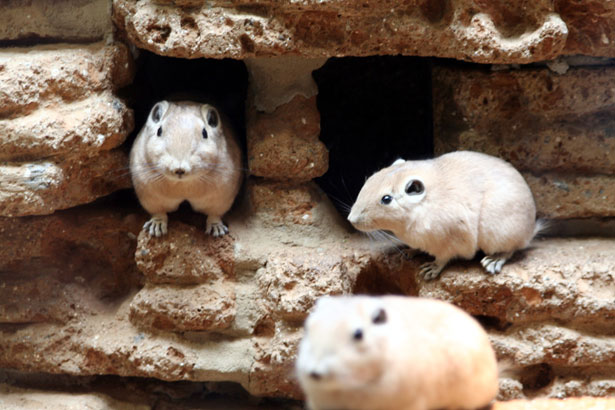Another paper in the string of publications coming out from the PhD study by Dr Alfellani (London School of Hygiene and Tropical Medicine) has just appeared in PubMed.
Dr Alfellani and his colleagues have done a great job in analysing a multitude of samples from humans, non-human primates and animals; I have previously blogged about their observations from studies of human and non-human primates. Moreover, they have surveyed available data in order to better discuss their own findings, and the work has contributed significantly to what today is known about the host specificity, genetic diversity, phylogeography and general molecular epidemiology of Blastocystis.
Alfellani's most recent paper is published in the journal Protist, and it deals with the 'Genetic Diversity of Blastocystis in Livestock and Zoo Animals'.
It is quite a large paper which includes a lot of new information and a comprehensive (and hopefully exhaustive) table summarising Blastocystis subtype data in all relevant hosts (humans, non-human primates, other mammals and birds).
I will highlight a couple of things from the paper:
1. Apart from reporting on virtually complete SSU rDNA sequences from a couple of subtypes for which entire SSU rDNA sequences have yet not been available, we also report on three novel subtypes. Until recently, we only knew about 14 subtypes (ST1-ST14), of which ST1-ST9 can be found in humans. Now, three additional subtypes have been identified; ST15 in artiodactyls (camel and sheep) and non-human primates (chimpanzee and gibbon), ST16 in kangaroos, and ST17 in gundis.
2. Novel data arising from analysis of faecal samples from humans and animals in Sebha, Libya, strongly indicate that humans and animals in this area are infected by different subtypes: Humans appear to carry ST1, ST2, and ST3, while synanthropic animals (artiodactyls in this case) mostly have ST5 and ST10 infections, suggesting that livestock is not a major contributor to human Blastocystis infection.
To this end, there is growing evidence of quite a substantial degree of host specificity of Blastocystis. Even when subtypes overlap between humans and animals, we have accumulating evidence that the strains found in humans and animals are different. This means that the hypothesis that animals constitute an important reservoir of human Blastocystis infections currently has very limited support. It is my clear impression that when a strain of ST6 or ST8 is detected in humans, this strain has most probably been transmitted from an animal source. But we very rarely see these subtypes in humans, at least in Europeans.
It will be extremely interesting to see how the universe of Blastocystis subtypes unfolds... by genetically characterising strains in humans and non-human hosts, we are building up a clearer picture of transmission patterns and evolutionary biology, including our adaptation to Blastocystis, and the parasite's adaptation to us and other hosts.
It is noteworthy that we are starting to see different subtypes in rodents. We have previously thought that generally, rodents were infected by ST4. But now we know that many rodents are not infected, and we also know that rodents may harbour subtypes other than ST4.
So,17 subtypes of Blastocystis are now known. We have probably only seen the top of the iceberg, since many host species have not yet been sampled from, and it is likely that we will see quite a few STs being identified in the nearest future. To this end it is necessary to have a consensus regarding the identification of novel subtypes. Along with the Protist paper we have uploaded a supplementary file (Appendix A, TXT format) with aligned reference sequences that can be used for phylogenetic analysis, hoping that it will be useful to our colleagues. In a future blog post I will try to address the issues of identifying new subtypes more specifically.
ST15 is one of the more interesting subtypes since it appears to have quite a low host specificity - infecting both non-human primates and artiodactyls. Yet, we have come across it only now. ST15 and ST17 are remarkable in the way that they appear to be closer related to herptile and arthropod lineages, respectively, than to lineages from mammals.
Please note that virtually complete sequences of ST10, ST13, ST14, ST15, and ST17 analysed in the study have been released in GenBank just now.
Further reading:
Alfellani MA, Taner-Mulla D, Jacob AS, Imeede CA, Yoshikawa H, Stensvold CR, & Clark CG (2013). Genetic Diversity of Blastocystis in Livestock and Zoo Animals. Protist, 164 (4), 497-509 PMID: 23770574Dr Alfellani and his colleagues have done a great job in analysing a multitude of samples from humans, non-human primates and animals; I have previously blogged about their observations from studies of human and non-human primates. Moreover, they have surveyed available data in order to better discuss their own findings, and the work has contributed significantly to what today is known about the host specificity, genetic diversity, phylogeography and general molecular epidemiology of Blastocystis.
Alfellani's most recent paper is published in the journal Protist, and it deals with the 'Genetic Diversity of Blastocystis in Livestock and Zoo Animals'.
It is quite a large paper which includes a lot of new information and a comprehensive (and hopefully exhaustive) table summarising Blastocystis subtype data in all relevant hosts (humans, non-human primates, other mammals and birds).
I will highlight a couple of things from the paper:
1. Apart from reporting on virtually complete SSU rDNA sequences from a couple of subtypes for which entire SSU rDNA sequences have yet not been available, we also report on three novel subtypes. Until recently, we only knew about 14 subtypes (ST1-ST14), of which ST1-ST9 can be found in humans. Now, three additional subtypes have been identified; ST15 in artiodactyls (camel and sheep) and non-human primates (chimpanzee and gibbon), ST16 in kangaroos, and ST17 in gundis.
 |
| The Gundi (Ctenodactylus gundi) is a rodent living mainly in the deserts of Northern Africa. (Source) |
2. Novel data arising from analysis of faecal samples from humans and animals in Sebha, Libya, strongly indicate that humans and animals in this area are infected by different subtypes: Humans appear to carry ST1, ST2, and ST3, while synanthropic animals (artiodactyls in this case) mostly have ST5 and ST10 infections, suggesting that livestock is not a major contributor to human Blastocystis infection.
To this end, there is growing evidence of quite a substantial degree of host specificity of Blastocystis. Even when subtypes overlap between humans and animals, we have accumulating evidence that the strains found in humans and animals are different. This means that the hypothesis that animals constitute an important reservoir of human Blastocystis infections currently has very limited support. It is my clear impression that when a strain of ST6 or ST8 is detected in humans, this strain has most probably been transmitted from an animal source. But we very rarely see these subtypes in humans, at least in Europeans.
It will be extremely interesting to see how the universe of Blastocystis subtypes unfolds... by genetically characterising strains in humans and non-human hosts, we are building up a clearer picture of transmission patterns and evolutionary biology, including our adaptation to Blastocystis, and the parasite's adaptation to us and other hosts.
It is noteworthy that we are starting to see different subtypes in rodents. We have previously thought that generally, rodents were infected by ST4. But now we know that many rodents are not infected, and we also know that rodents may harbour subtypes other than ST4.
So,17 subtypes of Blastocystis are now known. We have probably only seen the top of the iceberg, since many host species have not yet been sampled from, and it is likely that we will see quite a few STs being identified in the nearest future. To this end it is necessary to have a consensus regarding the identification of novel subtypes. Along with the Protist paper we have uploaded a supplementary file (Appendix A, TXT format) with aligned reference sequences that can be used for phylogenetic analysis, hoping that it will be useful to our colleagues. In a future blog post I will try to address the issues of identifying new subtypes more specifically.
ST15 is one of the more interesting subtypes since it appears to have quite a low host specificity - infecting both non-human primates and artiodactyls. Yet, we have come across it only now. ST15 and ST17 are remarkable in the way that they appear to be closer related to herptile and arthropod lineages, respectively, than to lineages from mammals.
Please note that virtually complete sequences of ST10, ST13, ST14, ST15, and ST17 analysed in the study have been released in GenBank just now.
Further reading:
Alfellani MA, Stensvold CR, Vidal-Lapiedra A, Onuoha ES, Fagbenro-Beyioku AF, & Clark CG (2013). Variable geographic distribution of Blastocystis subtypes and its potential implications. Acta Tropica, 126 (1), 11-8 PMID: 23290980
Alfellani MA, Jacob AS, Perea NO, Krecek RC, Taner-Mulla D, Verweij JJ, Levecke B, Tannich E, Clark CG, & Stensvold CR (2013). Diversity and distribution of Blastocystis sp. subtypes in non-human primates. Parasitology, 140 (8), 966-71 PMID: 23561720





